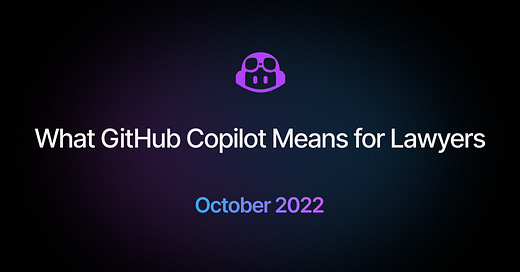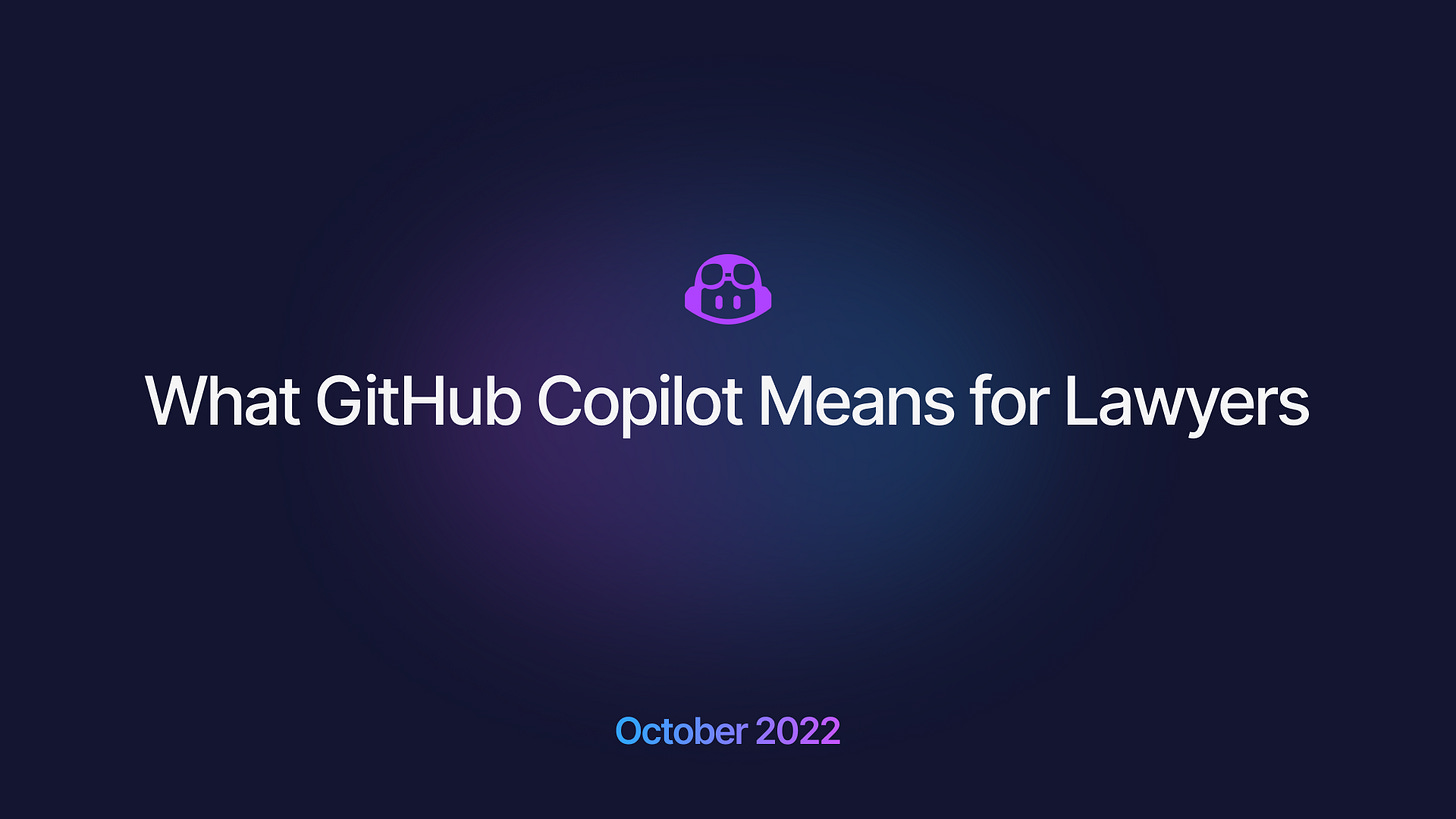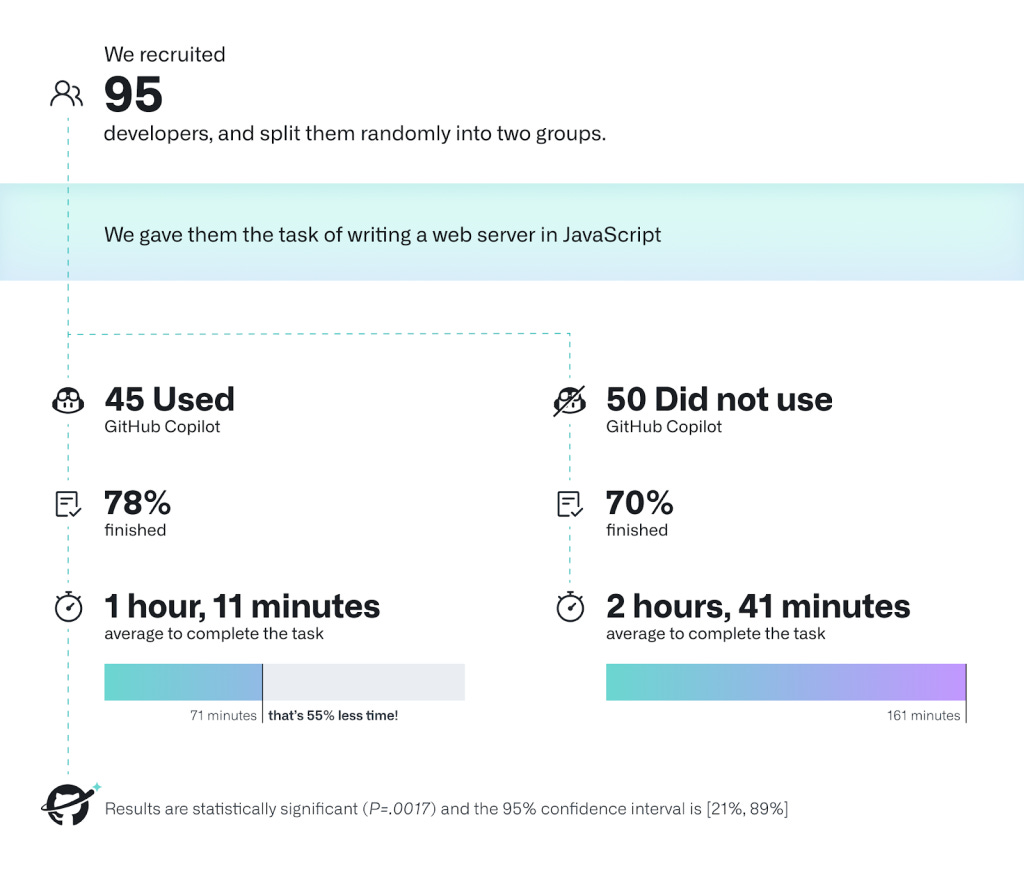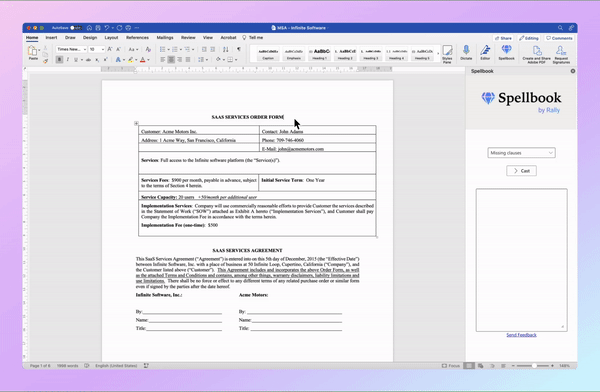I originally wrote this in October 2022, around the time that we launched Spellbook. It has been lightly edited and republished as a lead-in to an upcoming "What AI Agents Mean for Lawyers" post.
When I wrote this, we knew that something big might be coming, but had no idea that Spellbook was about to be adopted by 2000+ legal teams worldwide.
This blog is about bet making as a kind of competitive philosophy: seeing the truth about the world before others do. It’s useful to reflect back on what “great bets” about the future felt and looked like—so that we can recognize them again.
I think we might be in a similar moment again as agentic AI enables complex multi-step legal workflows to be automated. More on that soon!
Why AI-powered lawyering is actually here this time
Lawyers have put up with a lot of false promises from technologists. Besides email, search and the Word processor, legal workflows still haven’t become much more efficient—despite the creation of hundreds of legaltech and legal AI companies over the past couple decades.
I think that’s about to change.
GitHub Copilot is an AI assistant for computer programmers that has altered the profession’s perception of what AI is capable of.
It’s powered by OpenAI’s GPT3 large language model (LLM), and is like a super-powered autocomplete that suggests the text you’re looking for before you’ve thought of it yourself.
It sounds simple, but in practice it can help a programmer move 10x faster. In the example below, a programmer is trying to write code to fetch the text of tweets from a Twitter user. After typing a few characters, the AI gets the gist and outputs the rest of the code needed for the programmer!
What does this have to do with the legal profession?
Lawyers and software engineers have a lot in common. Both spend their days working with text & logic. Both are trained skeptics, who have the important job of finding problems & shortsighted thinking. Both have been very skeptical that AI could alter their day-to-day.
And, for both professions, there is a massive database of text on the Internet to train large language models on. Take the SEC’s EDGAR for example, it has over 400,000 contracts in it alone.
The Success of GitHub Copilot
GitHub Copilot is the first AI product for programmers that has broken through their skepticism. And for good reason.
Quantitative data below shows how GitHub Copilot enabled engineers to complete a complex task over twice as fast!
Subjectively, engineers love the experience too (and again, they hated the idea of AI tools until now):
I’m a software engineer too, and the first time I used it, I couldn’t get over the feeling of Copilot “thinking ahead of me”, sometimes by miles. It would output confusing code, which I believed was wrong. Then 10 minutes later I would realize the AI was foreseeing a problem I hadn’t even considered.
Wow. I really had never felt a machine “thinking ahead of me” like that before.
The Magic of GPT3 for Lawyers
After our engineering team had this experience with GitHub Copilot, we raced to prototype Spellbook, an analogous tool for transactional lawyers using the same technology.
After selling template-based automation software to lawyers for 4 years—this was a big “aha” moment for us.
Lawyers wanted to make their routine drafting workflows more efficient with templates, but every customer had the same problem: templates struggled to capture the nuance of their bespoke deals. They ended up going off the rails and ditching templates, even after working on their templates for months. They did not work in “structured text”, everything they did was bespoke at the end of the day.
Using GitHub Copilot was the first time we felt that a tool could riff off our own unstructured text, and truly speed up the production of unstructured text, by as much as 10-fold.
It also worked immediately out of the box, without tons of upfront work like template building.
First Use Cases
Here are some examples of some of the things we were able to build so far, right inside Microsoft Word:
1. Drafting New Language
Much like GitHub Copilot does for lawyers, Spellbook “auto-completes” the section you’re working on, or can draft entirely new sections based on a heading. This is shockingly useful. What feels really magical is how it interprets the context, tone and defined terms in your contract to generate full paragraphs that fit really quite well.
I love how my friend, attorney Ryan Juliano from Howell Legal, put it: “It may not be perfect, but it gives you marble to carve where you didn’t have any.”
Auto-Completing a Section by Typing “+++”
Drafting a Section with Some Additional Instructions
2. Reviewing Documents
Not only is GPT3 able to generate text, it’s also able to provide insights on text:
Find Missing Clauses
In this example, we're able to instantly list clauses that may be missing from an agreement.
Explain Section
We're able to explain sections or entire contracts in language a 10 year old might be able to understand! Great for sending clients explanations.
Finding Key Dates
We're able to extract key dates from a document, instantly, no matter how buried they are.
Just Scratching the Surface
These are a few quick applications of LLM technology for lawyers, but there’s a lot left we’re excited to try and build. I anticipate many other legaltech companies will build new features on top of this technology as well. It may take a decade to understand the impact of the technology on legal workflows.
What makes us even more optimistic is the rate at which this technology is improving. GPT4 is just around the corner. We are using the worst version of this technology that we ever will, and it’s already enabling 10x workflow improvements. I think it’s safe to say: large language models are about to change everything in legal, and they’ll be with us for a long time.
Maybe AI-powered lawyering is finally here this time.












